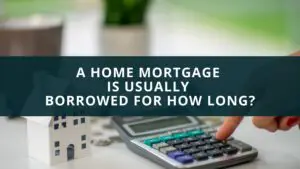
As a landlord, having tenants who often don’t pay rent on time can be a frustrating dilemma to deal with. While you’re entitled to be paid what’s rightfully yours on time, you don’t want to always resort to eviction because maintaining minimum tenant turnover is key to getting the most out of any rental property. Luckily, there are several ways to navigate this minefield.
To remind a tenant to pay rent, start with common courtesies such as issuing a late rent notice, scheduling a face-to-face discussion, or calling/texting/emailing the tenant in question. If they don’t comply, serve a Pay or Quit Notice to show that you’re serious about taking legal action.
In the rest of the article, I’ll discuss in great detail how you can effectively use the above methods to remind your tenants to hold up their end of the lease deal. Let’s dive right in!
Quick navigation
Serve a Late Rent Notice
So you have a tenant who is late on his rent payment (again), and you’re figuring out your next move. One way to remind them to settle without many confrontations is simply drafting a written reminder. A late rent notice acts as a polite reminder for your tenant to pay rent that’s overdue and should be your first course of action when dealing with a problematic renter.
Since they don’t involve much one-on-one contact, late rent notices help avoid personal confrontations with tenants, which can quickly escalate to lawsuits or create tension between you and your tenants. They also provide some form of paper trail that you can use for legal purposes should you choose to evict the problematic tenant in the future, so be sure to keep a copy of the notice.
For the most precise and effective written notice, be sure to capture the following details:
- Clear instructions on how the tenant should pay rent (i.e., the agreed form of payment as per the lease terms)
- Whether it is the first or second notice
- The penalties for late rent payments (if any), and whether these are to be paid with the rent
- The new deadline for overdue rent, as well as the consequences of defaulting it
- Personal details of the tenant, as well as your signature
Keep in mind that issuing a late rent notice isn’t a prerequisite for taking legal action. Rather, it’s a common courtesy for reminding a forgetful tenant to pay rent. That means you can skip it and jump straight into legal action if you run out of patience with a serial rent defaulter.
Nevertheless, it’s a recommended interim course of action if you don’t want to make things sour between you and other tenants. If drafting a late rent notice seems too complicated, check out EZ Landlords for inspiration.
Schedule a Conversation With the Affected Tenant
This is another optional step for reminding a tenant to pay rent and often comes after issuing a late rent notice. While it’s not a legal requirement, it can help you understand why a particular tenant keeps defaulting rent deadlines so you can come up with an amicable solution without involving the authorities.
This kind of intervention is especially recommended if the tenant in question had a good track record of paying rent on time before defaulting the current month’s deadline. People’s financial situations change all the time, and sometimes the change is temporary. If the latter is true, a sit-down can be a great way to jointly come up with a way forward.
If you choose to go down this road, be sure to keep things civil and friendly. To help you with that, here are a few talking points you might want to consider:
- Is the tenant having any health problems? If they are, discuss how it affects their ability to pay rent on time, and whether that’s subject to change soon.
- Is the current due date making it hard to pay rent on time? If it is, and you’re feeling generous, you can work jointly with the tenant to come up with a more favorable date.
- Has the tenant experienced a sudden change in their financial situation that’s affecting their ability to pay rent on time? Is this change permanent or temporary? If it’s permanent, will the tenant be able to afford the rent with this new financial situation? If temporary, how soon are they expecting it to change?
By having an open discussion with the affected tenant, you’ll likely find a way forward without the need for legal action. Even if you end up evicting the defaulter, other tenants will deeply appreciate the gesture, which is great for the landlord-tenant relationship.
Call/Text/Email the Affected Tenant and Remind Them to Pay Rent
When logistics don’t allow a face-to-face discussion, a phone call, email, or a text message can be ideal substitutes.
However, you should only call the affected party once because a sneaky rent defaulter can cite frequent calls as landlord harassment, which is illegal. Also, be sure to avoid confrontations in such calls because things like offensive language and threats can also count as harassment.
It might also be a great idea to set up a rent payment reminder system. There are several ways to do this, but you’ll want to get your tenants’ consent beforehand to avoid inconveniencing anyone.
For instance, you can set up an automated email that reminds your tenants to pay rent once a month. You can also use voice broadcasting services such as Dial My Calls to make automated calls to your tenants, reminding them of the rent due date. Bulk Sms Services may also be an option, but it can be costly.
Whichever method you choose to use, always be polite and straight to the point.
Serve a Pay or Quit Notice
If a tenant fails to comply even after the above common courtesy steps, it’s time to pull out the big guns: Serving a Pay or Quit Notice. A more formal document than a late rent notice, a Pay or Quit Notice technically marks the onset of the eviction process. Since most tenants know what it means, a rent defaulter is more likely to take you seriously and comply when you issue it.
To be legally binding, a Pay or Quit Notice must clearly communicate:
- Your intent to evict the tenant in question
- The amount of overdue rent
- Late fees, if applicable, as per the lease agreement
- The due date to pay in full the owed rent and late fees
Drafting a Pay or Quit Notice is fairly easy if you have a form designed specifically for that purpose. Sometimes, you might find these forms at your local housing or eviction court. If you can’t, you can source one from an eviction attorney or an online service provider.
You can also prepare a Pay or Quit Notice from scratch. If you choose this route, be sure to make it into a form letter that captures the following details:
- The date of the notice: That is the day you plan to issue the Pay or Quit Notice, not the date you write it.
- The tenant’s address and apartment number: These details should appear as they appear on the lease agreement.
- A clear indication that this is a Pay or Quit Notice: It’s recommended that you put this at the very top of the document, preferably in all caps.
- The amount of time the tenant has to clear the rent plus late fees (if any) or vacate the premises: Most landlords allow between 5 to 10 days, but you might want to check with your local statutes just to be sure you aren’t in any violation.
- The amount of rent due: Also, indicate the specific part of the lease the tenant has violated by failing to pay this amount on the agreed date.
- A clear indication that if the tenant fails to pay within the given timeframe, you intend to file an eviction case in court: Be sure to use text formatting to make this part as legible as possible, e.g., you can use larger fonts. Also, include it in the main body, and not in the fine print.
- Where and how the tenant is required to pay the rent.
- Your signature.
After drafting the notice, strictly adhere to your local laws regarding how, where, and when you must post the document. This is critical because, in court, you may be needed to prove that you exercised due diligence to ensure that the tenant got the notice.
Final Thoughts
As we’ve seen, there are several ways to remind a tenant to pay rent. Hopefully, the first three common courtesy steps will cut it, and it won’t come to involving the authorities because legal disputes can be costly in both time and money.
If it does, be sure to stick to the above guidelines for drafting a Pay or Quit Notice because this is the most important document as far as the eviction process is concerned. Best of luck!




